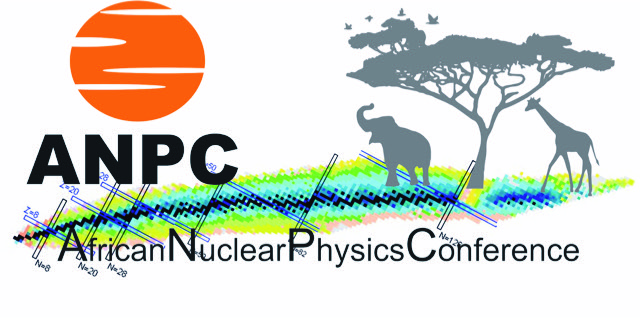Speaker
Description
C-burning plays a pivotal role in astrophysics, from the nucleosynthesis of massive stars, to explosive scenarios in carbon-rich environments such as superbursts from accreting neutron stars and type Ia Supernovae [1-4]. Carbon burning occurs at temperatures greater than 0.4 GK, corresponding to center-of-mass energies exceeding 1 MeV. The dominant evaporation channels below 2 MeV are a and proton, leading to 20Ne and 23Na, respectively. In spite of the considerable efforts devoted to measure the 12C(12C,α)20Ne and 12C(12C,p)23Na cross sections at astrophysical energies, they have been measured only down to 2.14 MeV, still at the beginning of the astrophysical region [5]. As known, direct measurements at lower energies are extremely difficult.
Moreover, in the present case the extrapolation procedure from current data to the ultra-low energies is complicated by the presence of possible resonant structures even in the low-energy part of the excitation function. For these reasons, indirects approaches can represent a unique way for an accurate investigation at the relevant energies. In particular indirect information on the energy trend plus 24Mg levels that may play a role in the 12C+12C low-energy fusion has been obtained through the 12C+13C and 13C+13C fusion [6]. Recently, the Trojan Horse Method [7] has been applied in the measurement of the 12C(14N,α20Ne)2H and 12C(14N,p23Na)2H three-body processes [8]. The measurement was performed at 30 MeV of 14N beam energy in the quasi-free (QF) kinematics
regime, where 2H from the 14N Trojan Horse nucleus is spectator to the 12C+12C two-body processes. The cross section experiences a strong resonant behaviour with resonances associated to 24Mg levels. As a consequence, the reaction rate is strongly enhanced at the relevant temperatures.
Results from indirect experiments will be presented and discussed.
[1] F. Kappeler et al., Ann. Rev. Nucl. Part. Sci. 48, 175 (1998).
[2] E. Garcia-Berro et al., Astrophys. J. 286, 765 (1997).
[3] L. Piersanti et al., Astrophys. J. 598, 1229 (2003).
[4] A. Cumming et al., Astrophys. J. 646, 429 (2006).
[5] T. Spillane et al., Phys. Rev. Lett. 98, 122501 (2007) and references therein
[6] M. Notani et al., Phys. Rev. C 85, 014607 (2012)
[7] R.E. Tribble et al., Rep. Prog. Phys., 76, 106901 (2014).
[8] A. Tumino et al., Nature 557, 687 (2018)

